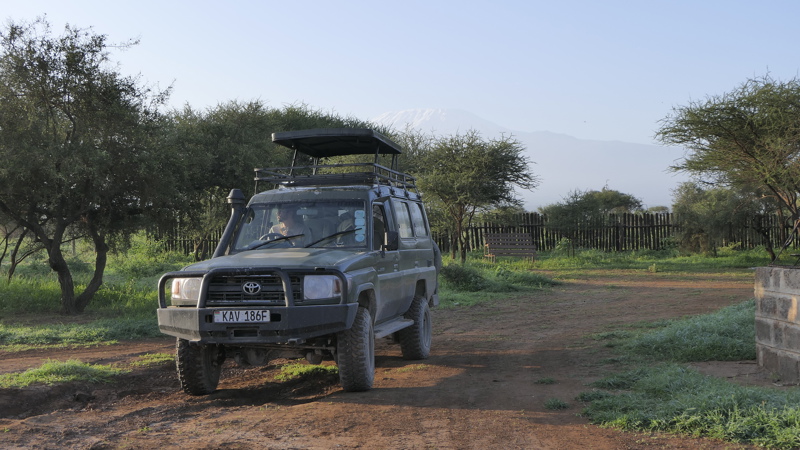Driving in Kenya: tips and information
Thinking about roadtripping Kenya? Driving in Kenya is an incredible adventure and absolutely doable with the right preparation - even for first-timers!
This guide gives you clear tips and practical advice. Learn about renting a reliable 4x4, staying safe on the road, and what to expect while driving. You’ll also find answers to common questions, like road conditions and what gear you need.
Not keen to drive yourself? No worries! We explain how to hire a friendly, knowledgeable driver-guide to handle the roads for you. Ready to start your adventure? Rent a safe, reliable 4x4 with us today and hit the road with confidence!
What are the road conditions for driving in Kenya?
Driving in Kenya offers both smooth highways ánd rugged dirt roads. Here’s what you need to know to plan your route safely and avoid surprises.
Primary roads
The main roads leading to and from Nairobi are well-paved and comfortable to drive. However, keep in mind that the A109 highway between Nairobi and Mombasa is busy with cars, buses, and slow-moving trucks. Construction work is common here, which can cause delays.
Secondary roads
Secondary roads (marked as C and D) are usually unpaved and may have potholes or eroded surfaces. Usually, you can expect the last stretch of your daily trip to require some driving on these dirt roads.
Inside national parks
Inside the parks, you'll mostly drive on dirt tracks. Road conditions vary with the seasons and are at their worst during the rainy season. Prepare for some off-road challenges, especially after heavy rains.
Roads to avoid
The below roads are currently in a bad state and should be avoided when driving in Kenya:
-
Amboseli Route (C103): Avoid this deteriorated road branching from Athi River towards Namanga. Instead, take the Nairobi-Mombasa highway (A109), turn off at Emali, and follow the well-maintained C102 to Kimana and the Kimana Gate.
-
Masai Mara via Maji Moto (C11): Stick to the tarmacked C12 route to Sekenani Gate, then follow the signpost to Maji Moto Eco Camp. Avoid the rough C11 road, as it can damage your vehicle and increase travel time.
-
Masai Mara - Oloololo Gate (C13): The C13 road to Oloololo Gate and nearby Mara gates is in bad shape and not recommended.
- Mombasa Shortcut (C107): Don’t use the C107 from Mariakani to Kinango as an alternative to bypass Mombasa. This road is poorly maintained and not a viable option.
Stay safe and plan ahead
Avoid shortcuts on secondary routes - they are often in bad condition. If you're unsure which route to take: don’t experiment but contact the Roadtrip Africa team in Nairobi for advice. We’re available 24/7 via WhatsApp to help you choose the best and safest routes. Your safety and smooth travel experience are our top priorities!

Do I need an international driving license in Kenya?
No, you don't need an international driver's license in Kenya. Your valid license from your home country is sufficient. Make sure to always carry your driver's license with you when driving.
At what side of the road should I drive in Kenya?
Left. Driving in Kenya is done on the left side of the road.
Is it safe to drive in Kenya?
Driving in Kenya is an unforgettable adventure! With the right preparation and caution, it can be safe and enjoyable. Follow these tips to stay safe on the road:
-
Drive defensively: Take your time and go with the traffic flow. The A109 highway between Nairobi and Mombasa can get busy with trucks and has potholes, making overtaking risky. Stay patient and avoid rushing.
-
Watch for speed bumps: Unmarked speed bumps are common, especially near town entrances. Slow down to avoid surprises.
-
Beware of potholes: Potholes can damage your car or cause a flat tyre, so keep an eye out and drive cautiously.
-
Stay connected: Buy a local SIM card with internet access to use Google Maps and contact us via WhatsApp if needed. Safaricom offers the best coverage in Kenya. You can purchase a SIM card at the airport or shopping malls.
-
Safety tips in towns: Lock your car while driving in Nairobi, Mombasa, or other large towns. Also, keep in mind to never leave valuables unattended and always park in secure areas. If staying overnight, choose accommodations with safe parking.
-
Avoid night driving: Driving at night is risky due to poor visibility of potholes and oncoming traffic with high beams. It’s best to travel during the day.
-
Be prepared: Carry some cash, water, and a fully charged mobile phone for emergencies.
By following these tips, you can enjoy a safe and smooth driving experience in Kenya.
Not comfortable driving yourself? No problem, just book a car with a knowledgeable driver-guide! Let them handle the roads while you sit back, relax, and soak in Kenya’s stunning scenery.
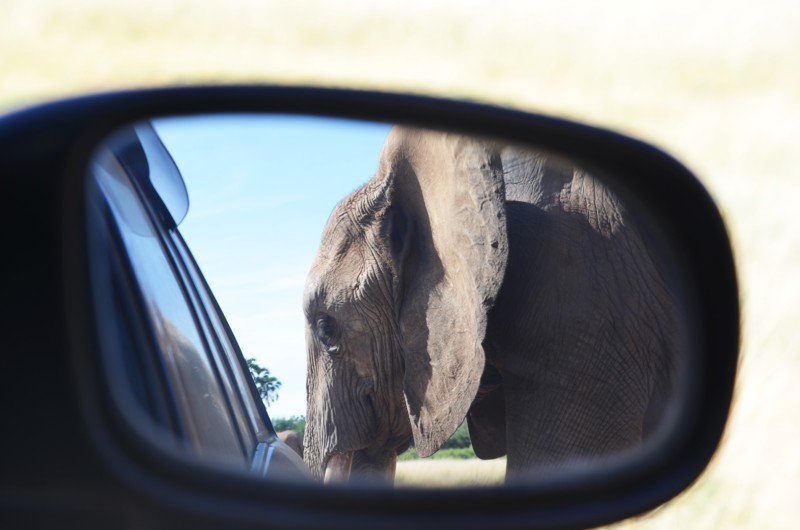
What are the speed limits in Kenya?
- 80 km/hour on highways. In Kenya, Land Cruisers are classified as heavy-duty vehicles due to their longer braking distance. As a result, they are not allowed to exceed 80 km/h on highways.
- 40 km/hour when driving through towns. Note that the main highways also pass through towns, so make sure to reduce your speed.
- 35 km/hour inside the National Parks. Depending on the various tracks.
Traffic police in Kenya are very strict about speed limits. To comply with the law, our Land Cruisers are restricted to 80 km/h. Keep this in mind, especially when overtaking on the highway.
Can I cross borders with my rental car?
You can’t cross borders with our Kenya-registered vehicles. But we make it easy to combine Kenya with Tanzania or Uganda in one trip. Here’s how:
Combining Kenya with Tanzania
If you want to visit both countries, you’ll need two separate vehicles; one from our Nairobi branch and one from our Tanzania branch in Arusha. This is due to ongoing trade disputes between the two countries. Kenya-registered cars are currently not allowed in Tanzania's National Parks, and vice versa.
You have two options:
1. Shuttle bus + 4x4 rental (most affordable)
Explore Kenya with a 4x4 from our Kenyan fleet. Then take a daily shuttle bus (such as Riverside or Impala Shuttle) from Nairobi to Arusha, crossing the Namanga border on the way (about 5–6 hours).Once in Arusha, pick up your 4x4 from our Tanzania fleet and continue your safari.
2. Vehicle swap at the border (most convenient)
Drive your Kenyan 4x4 to the Namanga or Oloitokitok border. Swap vehicles with our Tanzania team right at the border. Extra costs apply, as we need to return both cars to Nairobi and Arusha afterwards.
For tips on how to combine the Masai Mara (Kenya) with the Serengeti (Tanzania) in one trip, check out our Travel Blog!
Combining Kenya with Uganda
Here you also have two options:
1. Cross with a Ugandan vehicle
Rent a 4x4 from our Uganda branch in Kampala. Border crossings with our Uganda fleet are allowed.
2. Vehicle swap at the border
Explore Kenya with a Kenyan vehicle and Uganda with our Ugandan-registered vehicle. Swap cars at the border with our team’s assistance. Please note that extra costs apply for this service.
East Africa roadtrip
If you want to do an East Africa road trip, rent from our Uganda branch in Kampala. It's also possible to start your rental in Kampala and drop off your vehicle at another location or country (Kenya, Tanzania, Rwanda), but one-way charges apply.
Get in touch for more details about the aforementioned possibilities.
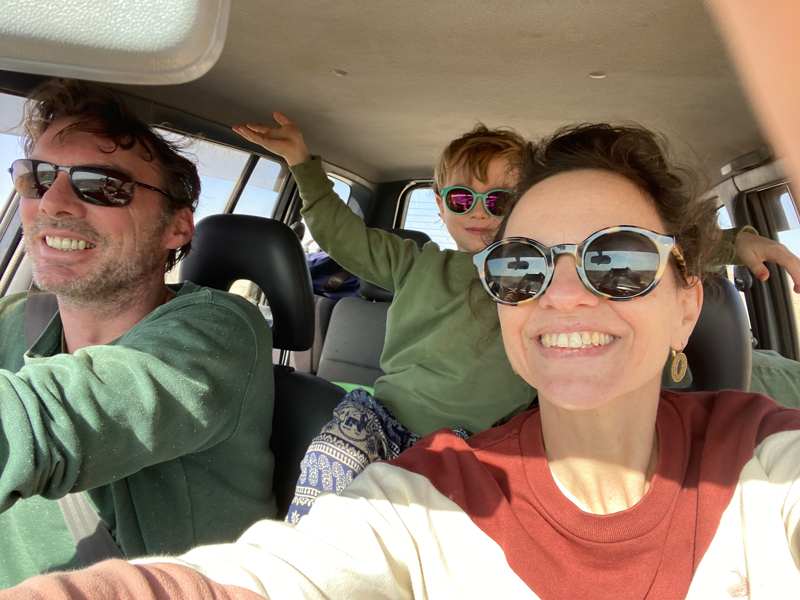
Is insurance included with my car rental in Kenya?
Yes, our car rental in Kenya includes insurance. This covers damage from accidents or fire and includes third-party liability in case of a car accident.
Choose your insurance coverage
Our standard insurance has a maximum deductible of €1500. This means that in the event of damage for which liability is waived, the first €1500 is at your own expense (also called the excess fee).
When you add Comprehensive Collision Damage Waiver (€10/ day), the maximum deductible is lowered to € 250.
When you choose Zero Excess (€20/ day), the insurance also covers damage to tyres, screens and undercarriage, and the excess fee is lowered to zero.
What’s not covered?
Our full terms & conditions are included in the car rental agreement. You can also consult them here.
Which Telecom providor to use in Kenya?
Kenya has several mobile network providers, but Safaricom offers the best coverage across the country.
Before you start your roadtrip, make sure you get a SIM card and load it with sufficient data for internet and phone calls. You can easily obtain a SIM card by bringing your passport to the Telecom company's service centre of your choice.
If you’ve rented your car with us, our team is happy to assist you. Whether we’re meeting you at the airport or your lodge, we’ll explain where and how to buy a SIM card to keep you connected on your journey.
How does it work with navigation in Kenya?
All our rental vehicles come with a detailed road map of Kenya to help you plan your route.
Besides Google Maps, we strongly recommend that you install Maps.me on your smartphone before travelling to Kenya. It's a free app that allows you to use GPS offline. We also recommend downloading the app iOverlander, which includes almost every campsite in the country.
When using navigation apps, increase the suggested travel time by about 30%. Kenya’s road conditions and traffic can slow you down. For more details, check out our driving times & distances table.
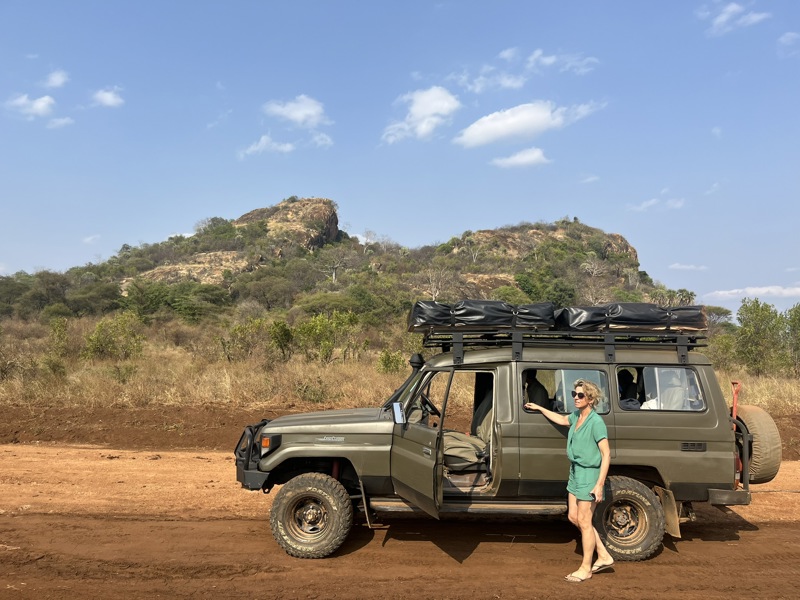
What happens if I get a breakdown or accident while driving in Kenya?
Our fleet of second-hand Land Cruisers is well-maintained and carefully checked before every trip. However, driving on Kenya’s rugged roads can sometimes lead to unexpected issues. Here’s what you need to know:
Why breakdowns happen
Breakdowns can occur due to:
- The condition of the car
- Road conditions (potholes, speed bumps, mud, dust)
- Driving behaviour (speeding, fatigue)
- Bad luck
Although we can only affect the first of these events, we will help you to the best of our abilities, regardless of the reason for your breakdown. Our team is very experienced in troubleshooting along the way but keep in mind that cooperation, flexibility, and patience from your end are key to resolving issues quickly too.
Preventing issues
In our ten years of experience, we learned that many breakdowns on self-drive trips are caused by driving behaviour - often infused by jam-packed itineraries leading to long driving days and speeding or fatigue. Hence, our most important piece of advice: make sure your travel plan is not too ambitious. Prevention is better than troubleshooting.
What we do to help
-
Minor issues: We’ll connect you with our network of bush mechanics for quick, on-the-spot fixes.
-
Major issues: If the car cannot be repaired within 24 hours, we’ll provide a replacement vehicle so you can continue your trip.
-
Accidents or breakdowns: Contact our Kenya office immediately. We’re available 24/7 to guide and assist you.
Is a self-drive trip right for you?
Ask yourself: can I stay calm in unexpected situations like a flat tyre, mud, or delays? If not, a self-drive trip might not be the best choice. Kenya’s roads can be unpredictable, and flexibility is essential.
For more details, check our Terms & Conditions or contact us anytime. We’re here to ensure your trip is as smooth as possible!
Where can I rent a driver in Kenya?
If you prefer not to drive yourself, hiring a local driver-guide is a fantastic option. At Roadtrip Africa, we can arrange a knowledgeable and friendly driver to accompany you on your road trip.
Why hire a driver-guide?
-
Local expertise: Your driver knows Kenya’s roads, culture, and hidden gems, making your trip stress-free and enriching.
-
Flexible itinerary: You stay in control of your holiday plans while your driver handles the logistics and driving.
Hiring a driver is simple - just let us know during your booking, and we’ll take care of the rest!
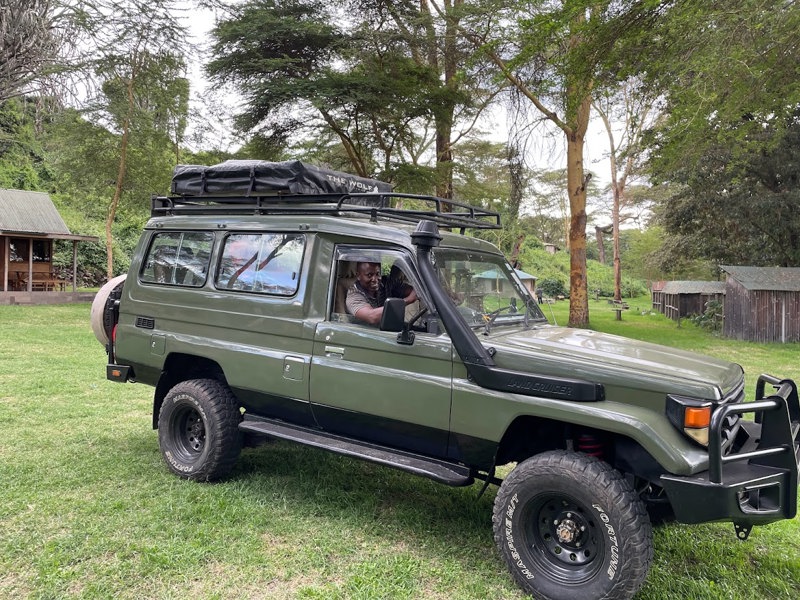
How do I deal with traffic police in Kenya?
Advice that comes in handy when dealing with any kind of government official in Kenya is to be respectful, remain patient and stay friendly. Greet them in Swahili (jambo!) make a joke, and you will be guaranteed a new friend.
Traffic police can pull you over to check:
If you’re fined for an offence (like speeding or overtaking dangerously), the fine must be paid via bank deposit. If this happens, don’t worry - contact our team at the Roadtrip Africa office in Nairobi and we’ll assist you.
Where can I rent a car in Kenya?
Excited to start your road trip in Kenya? At Roadtrip Africa, we’re here to help you find the perfect vehicle for your adventure.
Why choose Roadtrip Africa?
-
Reliable 4WD fleet: Our vehicles are sturdy, widely trusted, and ideal for Kenya’s roads.
-
No third parties: We own all our cars, ensuring top quality, 24/7 roadside assistance and no fuss.
-
Years of experience: We are adventure travellers ourselves, and have a knowledgeable, local team on the ground to guide you.
Ready to go?
Book your 4WD car today and get ready to explore Kenya at your own pace!
